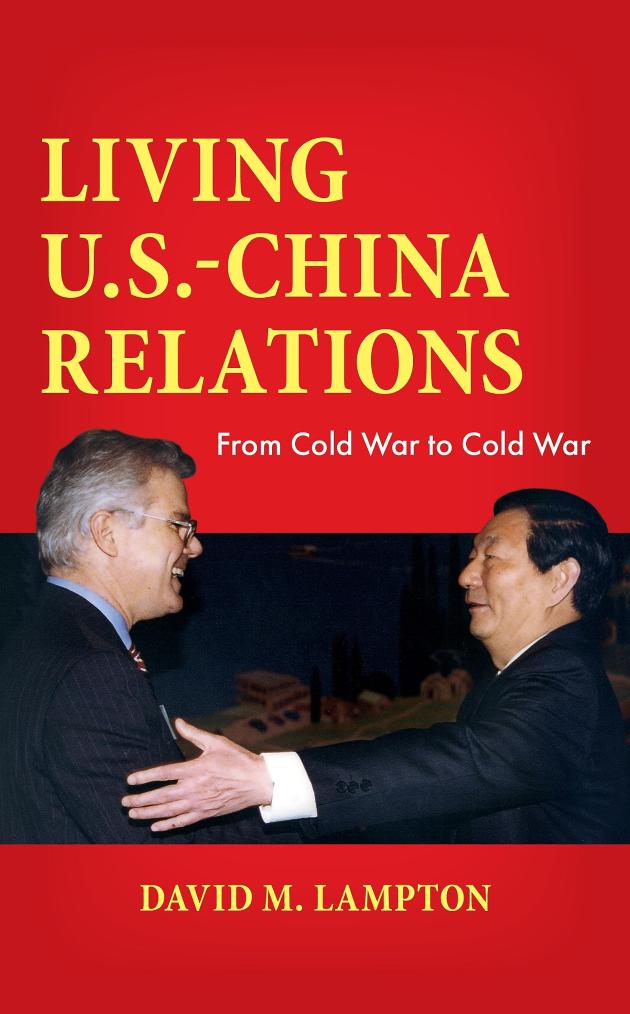As tensions rise with China, U.S. should focus on commonalities, not differences
U.S.-China ties should be viewed as the relationship between two societies, not just two states, says author and SAIS professor emeritus David M. Lampton
Key Takeaways:
- David M. Lampton has spent nearly 60 years working to build a mutual understanding between the United States and China.
- His new book, “Living U.S.-China Relations: from Cold War to Cold War,” uses his extensive experience to tell the story of U.S.-China ties as the relationship between two societies, not just two states.
- Viewing U.S. engagement with China through this lens allows for a more nuanced approach that focuses on similarities between the two—not differences.

In the early 1980s, while he was starting his academic career at Ohio State University, David M. Lampton played a key role in establishing an academic relationship with Wuhan University—a partnership that continues to this day.
While working to develop that connection, Lampton was struck by similarities between Ohio and China’s Hubei province, where Wuhan is located. Both are situated in the center of their respective countries. Both have industrial and agricultural interests. And residents of both shared a similar alienated feeling of being disconnected from the political and financial power centers in large coastal cities.
“We spend so much time thinking about how China’s different, but in this important way, we actually have similar kinds of social divisions,” Lampton said at a recent event hosted by the Johns Hopkins School of Advanced International Studies in which he shared details and anecdotes from his illustrious career—much of it spent at SAIS. For many years, he was director of SAIS-China, part of SAIS’ enduring legacy as a global leader in China studies. The event was co-moderated by the current director of SAIS’ China Studies program, Professor Andrew Mertha, alongside two other SAIS faculty members, Carla Freeman and David Bulman.
To say U.S.-China relations today are fraught would be an understatement. But amid rising tensions and heated rhetoric, Lampton maintains that many experts are viewing the relationship as primarily one between two states when it must also be examined as a relationship between two societies.
“We spend so much time thinking about how China’s different, but … we actually have similar kinds of social divisions.”
– David Lampton
That’s the gist Lampton’s new book, “Living U.S.-China Relations: from Cold War to Cold War,” which focuses on his nearly six decades studying the country, from the dawn of rapprochement in the 1970s through his field-defining academic career and his extensive work in the NGO world, as well as his personal interactions with some of China’s most important leaders of the past half-century.
“The traditional storyline is that U.S.-China engagement was built on a misconception that somehow by the mere act of engagement, the political system of China was going to change in ways that would be more congenial to the U.S.,” said Lampton, who is also a senior research fellow at the SAIS Foreign Policy Institute.
What ended up happening set the stage for the current strained relations of today—and is tantamount to a snowball rolling down a hill uncontrollably. “It wasn’t a strategy. It wasn’t a plan. It was a happening,” he said.
As every aspect of U.S. society—from universities to businesses to the military—became interested in engaging with China for their own gain, the balance of power shifted in both nations.
“What happened is every different interest group in this society saw a reason to interact with China, and on balance—for about 30 to 40 years—that was positive,” he said. “But in the process, there was a lot of damage in both our societies, with people and groups who saw themselves as losers.”
In the end, Lampton says, this period of globalization—which continues today—has been widely disruptive to both the U.S. and China, providing fertile ground for negative narratives and increased competition that has, at times, threatened to devolve into conflict.
While Lampton, a self-proclaimed optimist, doesn’t see an end to the current tensions, he is adamant that at some point the two countries will find they need each other once again.
“It’s not just about conflict. This is the boxing ring here in Washington for the relationship. But there are lots of other arenas, and most of them can be much more cooperative,” he said. “There’s a need for voices to give a human face to this, to be relentless in the search for cooperative opportunities.”